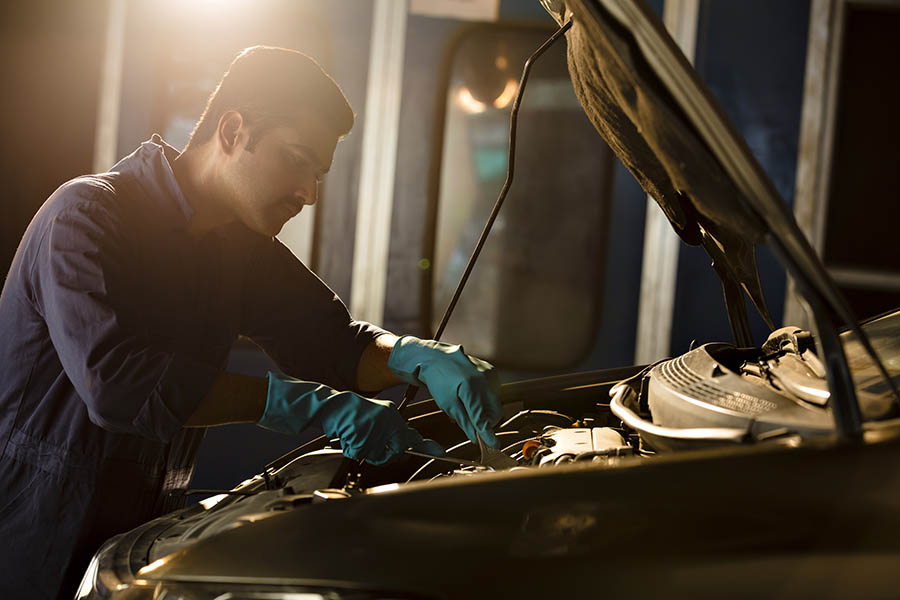HOW IT WORKS
Auto Repair Shops

- Establishments offering repair services for automobiles, including mechanical repairs, bodywork, and maintenance.
Auto repair shops are establishments that specialize in repairing and maintaining vehicles, including cars, trucks, motorcycles, and other motorized vehicles. Their key characteristics include having skilled mechanics and technicians who diagnose and fix mechanical issues, conduct regular maintenance services, and provide quality customer service.
The target audience for auto repair shops includes vehicle owners who require routine maintenance, repairs, and emergency services for their vehicles. Common products and services offered by auto repair shops include oil changes, brake repairs, tire replacements, engine diagnostics, electrical system repairs, and more.
Typical business models for auto repair shops include independent shops, franchise locations, and chain stores. Notable trends and innovations within the industry include the adoption of advanced technology for vehicle diagnostics, online scheduling tools, and eco-friendly repair practices.
The unique value proposition of auto repair shops lies in their ability to provide reliable and efficient services to keep vehicles running smoothly and safely. However, significant challenges faced by these businesses include staying updated with rapidly changing automotive technology, managing competition from dealerships and online service providers, and maintaining customer trust and loyalty. Overall, auto repair shops play a crucial role in keeping vehicles in optimal condition and ensuring road safety for drivers.
Initial Stage: In the auto repair shop industry, the operational cycle typically begins with the identification of market opportunities or consumer needs. This involves assessing the demand for vehicle maintenance and repair services in the local area, as well as understanding the specific requirements of customers.
Product Formulation: Once market needs are identified, the auto repair shop formulates its products or services to meet these demands. This may include offering a wide range of repair and maintenance services, using high-quality parts and equipment, and providing efficient and reliable service. Unique features or value propositions could include specialized expertise in certain vehicle makes or models, quick turnaround times, or competitive pricing.
Marketing and Promotion: To reach target audiences and generate interest, auto repair shops may employ various marketing and promotional strategies. This could involve traditional advertising methods such as print ads, radio spots, or direct mail campaigns, as well as digital marketing tactics like social media advertising, search engine optimization, and email marketing.
Sales and Distribution: The sales and distribution processes in auto repair shops typically involve direct customer interactions at the shop location. Customers may schedule appointments for service, drop off their vehicles for repair, and pick them up once the work is completed. Some shops may also offer mobile repair services or shuttle transportation for customer convenience.
Post-Sale Services: After completing the repair or maintenance service, auto repair shops focus on providing post-sale support to ensure customer satisfaction and loyalty. This could include offering warranties on parts and labor, addressing any issues or concerns that arise after the service is completed, and soliciting feedback from customers to gauge their experience.
Continuous Improvement: Auto repair shops may take measures for continuous improvement or adaptation based on market feedback. This could involve investing in training for staff to stay updated on the latest technologies and repair techniques, implementing customer service enhancements based on feedback, or expanding service offerings to meet changing customer needs.
Overall, the operational cycle of an auto repair shop involves identifying market opportunities, formulating products and services to meet customer needs, marketing and promoting services, engaging in sales and distribution processes, providing post-sale support, and continuously improving to stay competitive in the industry.
Auto repair shops face numerous challenges in their daily operations. Resource management can be a struggle due to the need for skilled technicians and specialized equipment. Communication and collaboration can be hindered by miscommunication between staff or with customers. Process inefficiencies can lead to delays in service and dissatisfied customers. Inventory management is crucial to ensure parts are readily available when needed. Quality control is essential to maintain customer satisfaction and trust. Technology integration can be a hurdle for shops looking to streamline operations. Data management is important for tracking customer information and service history. Risk management is necessary to prevent accidents or legal issues. By addressing these challenges with proper training, efficient processes, and effective communication, auto repair shops can overcome these obstacles and thrive in the industry.
-
Webspad transformed our auto repair shop by providing us with cutting-edge technology and tools that streamlined our operations. We were struggling with inventory management and communication issues, leading to delays in service and frustrated customers. With Webspad, we now have efficient processes in place, real-time inventory tracking, and improved communication among our staff and customers. Our business has seen a significant improvement in customer satisfaction, reduced service times, and increased efficiency. We are grateful for the support and expertise Webspad has provided, allowing us to overcome challenges and succeed in the competitive auto repair industry.
Auto Repair Shops Merchant Tweet / X

